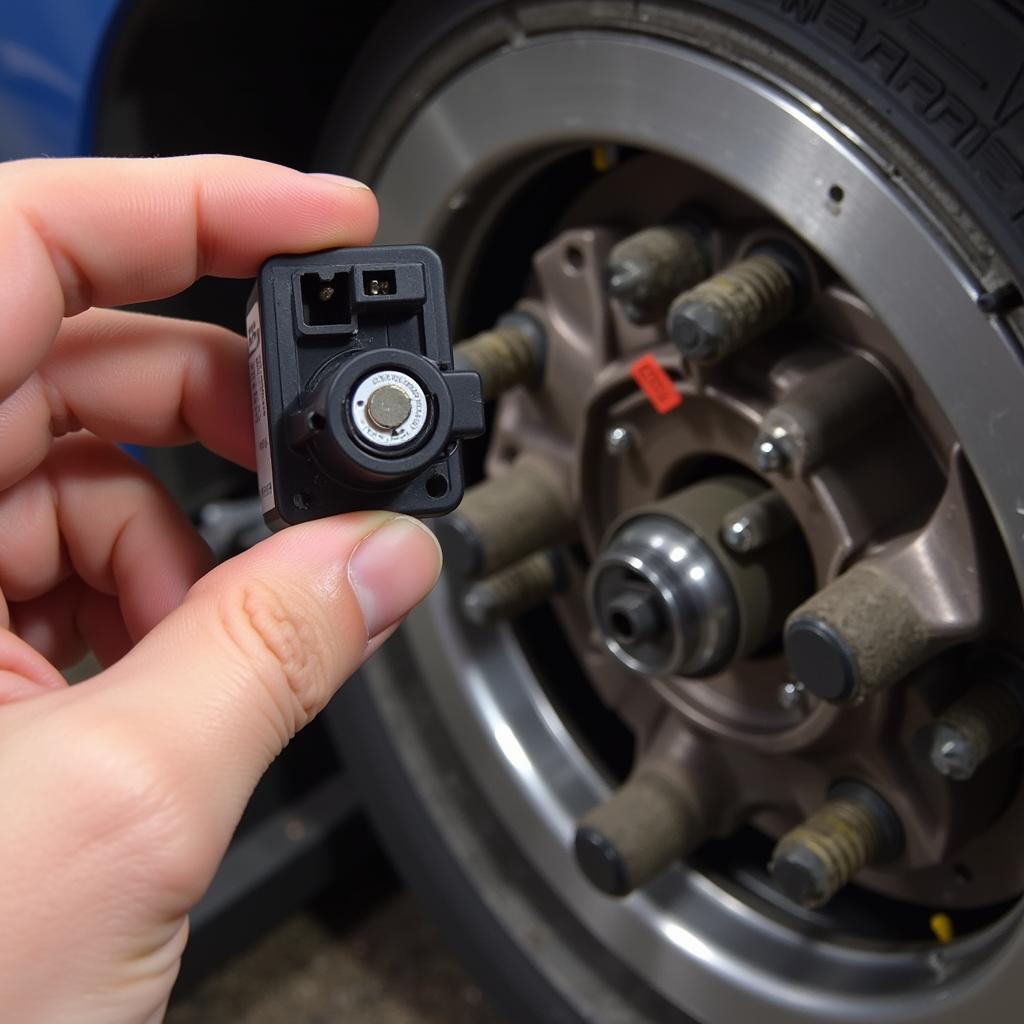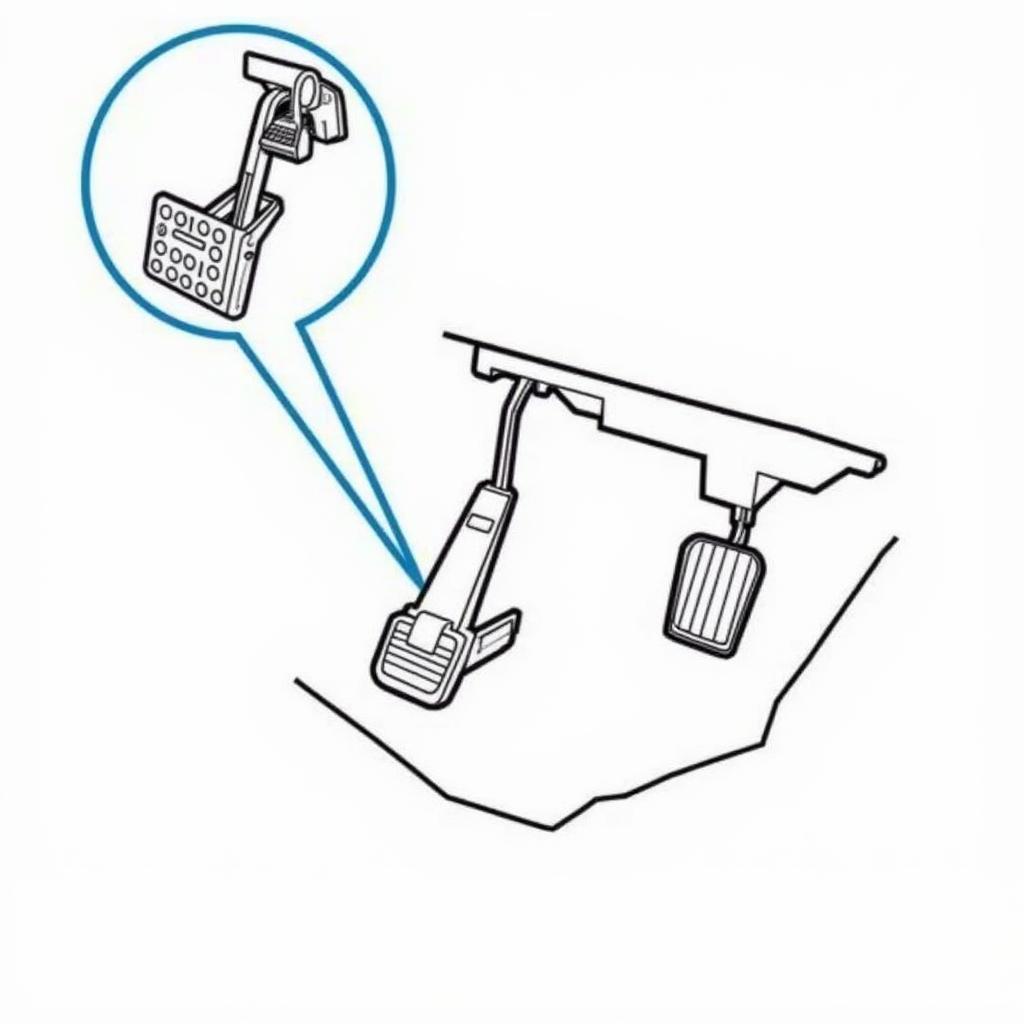Seeing a yellow brake warning light illuminate on your Nissan Leaf’s dashboard can be a nerve-wracking experience. It’s a clear signal that something isn’t quite right with your vehicle’s braking system, which demands your immediate attention. While it might not always indicate a critical malfunction requiring a tow truck, ignoring it could jeopardize your safety and potentially lead to costlier repairs down the line. This comprehensive guide will walk you through the common causes of a yellow brake warning light on a Nissan Leaf and provide practical solutions to help you get back on the road safely.
Understanding the Yellow Brake Warning Light
Unlike the red brake warning light, which usually signals a complete brake failure, the yellow brake warning light often points to issues within the electronic control systems of your Nissan Leaf. These systems, designed to optimize braking performance and safety, rely on a complex network of sensors and modules that communicate with each other. When one or more components within this network malfunction, the yellow brake warning light serves as an early warning system, prompting you to investigate and address the issue before it escalates.
Common Causes of a Yellow Brake Warning Light on a Nissan Leaf
Several factors can trigger the yellow brake warning light in your Nissan Leaf. Let’s delve into the most prevalent causes and their potential solutions.
1. Malfunctioning ABS Sensor
The Anti-lock Braking System (ABS) is crucial for preventing wheel lockup during hard braking, ensuring steering control and stability. Your Nissan Leaf utilizes wheel speed sensors to monitor each wheel’s rotational speed and relay this information to the ABS control module. If a sensor becomes faulty, dirty, or damaged, it disrupts this communication, triggering the yellow brake warning light.
 Nissan Leaf ABS Sensor
Nissan Leaf ABS Sensor
Solution: A qualified technician should inspect and test the ABS sensors. Cleaning or replacing the faulty sensor usually resolves the issue.
2. Faulty Brake Pedal Position Sensor
The brake pedal position sensor plays a vital role in determining how hard you’re pressing the brake pedal and signaling the braking system to engage accordingly. A malfunctioning sensor can misinterpret your braking input, leading to inconsistent braking performance and illuminating the yellow brake warning light.
 Brake Pedal Sensor Location
Brake Pedal Sensor Location
Solution: A mechanic should inspect the brake pedal position sensor for proper installation, alignment, and signs of damage. Replacing a faulty sensor is typically necessary to restore proper braking function.
3. Low Brake Fluid Level
Brake fluid is the lifeblood of your Nissan Leaf’s braking system, transmitting the force from your foot on the brake pedal to the wheels, enabling your car to slow down or stop. If the brake fluid level drops below the minimum mark due to a leak or wear and tear, it can trigger the yellow brake warning light.
Solution: Check the brake fluid level in the reservoir. If it’s low, adding the recommended brake fluid can temporarily resolve the issue. However, it’s crucial to have a professional inspect the braking system for leaks, as driving with a brake fluid leak is incredibly dangerous.
4. Issues with the Electronic Parking Brake
The electronic parking brake system in your Nissan Leaf relies on electronic actuators to engage and disengage the parking brake. A malfunction within this system, such as a faulty actuator or sensor, can trigger the yellow brake warning light.
Solution: Diagnosing and repairing issues with the electronic parking brake often requires specialized equipment and expertise. It’s best to consult a qualified Nissan technician who can accurately pinpoint and address the problem.
Diagnosing the Yellow Brake Warning Light Remotely
In today’s technologically advanced world, remote diagnostics and software solutions play a crucial role in identifying and resolving automotive issues. If your Nissan Leaf displays the yellow brake warning light, remote diagnostics can offer valuable insights and potential solutions.
As an expert in automotive electrical engineering, I specialize in remote diagnostics, programming, and software installation for automotive repairs. By leveraging advanced diagnostic tools and software, I can connect to your Nissan Leaf’s onboard computer system remotely, retrieve diagnostic trouble codes, and analyze real-time data from various sensors and modules.
This remote access enables me to assess the situation accurately and efficiently, often identifying the root cause of the yellow brake warning light without requiring a physical inspection. Depending on the diagnosis, I can recommend appropriate solutions, whether it involves software updates, system resets, or guiding you through basic troubleshooting steps.
Example:
“I recently encountered a Nissan Leaf owner who contacted me about a persistent yellow brake warning light. Through remote diagnostics, I identified a software glitch affecting the electronic parking brake module. By remotely installing a software update, I resolved the issue, saving the owner a trip to the dealership and restoring their peace of mind.” – [Your Name], Automotive Electrical Engineer
Conclusion
A yellow brake warning light on your Nissan Leaf should never be ignored. While it might not always indicate a critical emergency, addressing the issue promptly is crucial to ensure your safety and prevent potentially costlier repairs in the future. By understanding the common causes and considering remote diagnostics as a viable option, you can approach this situation with confidence and get back on the road safely. Remember, when in doubt, consulting a qualified Nissan technician is always the safest course of action.

